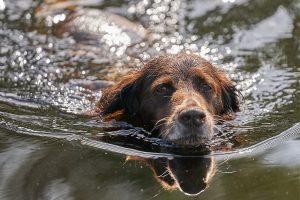
We Tried 5 Fresh Dog Food Brands
Is all the marketing hype worth it? Did our dogs enjoy them? Here’s our dogs’ totally honest review.
Kleiner Münsterlander Vorstehhund
The Small Münsterländer is the smallest pointing dog in his country. This small dog with strong nerves, great responsiveness to game and an inexhaustible predator instinct is a lovely life companion and excellent all-round hunting dog. Very courageous and will stop at nothing, he is ready to do anything to succeed in his work. Hunters love him and families adopt him. He is a lovely and excellent dog, passionate about everything that affects his daily life.
Attentive, friendly, intelligent, sociable, responsive, lively, energetic and courageous, the Little Münsterländer is a perfectly balanced dog that is very friendly with everyone.
He is easy to socialize. His intelligence makes him an easy dog to train, as he learns very quickly. Nevertheless, his training must still be firm and adequate.
He loves to live next to his master inside the house, and since he is naturally very clean, he usually causes no problems. He adapts easily to all family situations and types of owners.


With a noble and elegant appearance, he has a powerful and very harmonious build.
His well-balanced physique gives a glimpse of his great capacity for work, and the fluid lines of his silhouette complete in harmony his elegant and very special look.
Between 52 and 56 cm (20.47 to 22.05 inches) for the male
Between 50 and 54 cm (19.69 to 21.26 inches) for the female
Between 18 and 23 kg (39.68 to 50.71 pounds) for the male
Between 18 and 23 kg (39.68 to 50.71 pounds) for the female
The color of his coat can vary between brown and white or chestnut roan (brown and white spotted with brown). Fawn spots on the eye and muzzle are possible.
His slightly wavy, tight and smooth coat is medium length, and adheres very well to the body.
His head has a flat skull with a slight stop. His eyes, of medium size, are dark brown.
His large ears, close to the head and ending in a point, are set high. His nose is a pretty brown color, in harmony with the coat.
His medium length tail is carried horizontally in action, and drooping at rest.
According to the FCI breeds nomenclature, this breed belongs to group 7, section 1 and is #102




This very pretty medium sized dog, appreciated for hunting, is a versatile worker, able to hunt on all types of terrain.
This firm stop retriever is excellent at working after gunshot. Practically suited to all climates, he is a daring dog with great courage.
This hunting dog at heart is inexhaustible, both at work and home.
His lively and very playful character makes him an excellent companion for children, and everyone in the house.
He is attentive to his environment and has an extremely friendly temperament, always ready to welcome and play with everyone.
His size allows him to reside anywhere, but his need for exercise is frequent and regular. He much prefers the wide open spaces of the countryside, where he can run freely, to restricted parks in the city.
The city dweller with a Small Münsterländer should make sure to regularly provide him with plenty of space where he can spend his energy freely.
His pretty ears, hanging at rest, must be monitored and inspected regularly to reduce the risk of ear infection.
Rather robust and solid, this pretty canine specimen generally enjoys excellent health and is rarely sick.
Affected by no particular pathology or genetic disease, the specimens are generally endowed with a very good life expectancy.
GROOMING
His coat requires energetic brushing at least twice a week to keep it clean, beautiful and healthy.
However, no further special maintenance is required. The maintenance of his dress is therefore easy, and requires very little time.
The origins of the Small Münsterländer can be traced back to the Oysel Dogs in the Middle Ages, where he was originally a cross between a Setter, Pointer, Longhair Pointing Dog and certain types of Spaniels.
At the time, Oysel dogs from the Münster region of Germany, which were good at pointing, retrieving and had a fine nose, were much sought after and appreciated for hunting in their home country.
In 1906, the poet Hermann Löns and his brothers set out in search of the last of the remaining breeds, more precisely of the breed then known as the "Red Hanoverian Heidebracke", which they called in turn "Moor Spaniel". At the same time, another breeding was set up by the Director of the Reitmann School in Burgsteinfurt in collaboration with Baron von Bevervörde-Lohburg.
Later, in Westphalia, the "de Dorster" variety was born. In 1912, the Association of Small Pointing Dogs of Münster was founded to encourage the development of the breed, as well as the selection of the long-haired variety, known for some years in the region of Münster in Germany. At that time, the lack of standard greatly hampered the development of the breed.
In 1921, Dr. Friedrich Jungklaus defined the official standard of the breed, allowing it to really take off. The Small Münsterländer appeared in France around 1960, and since the standard was established, he has become more popular than his canine counterpart, the Large Münsterländer.
This magnificent specimen, prized for hunting, makes an excellent pointing dog that can find and point small game. In addition to his many hunting qualities, he has wonderful companion skills, making him a very pleasant companion.

Is all the marketing hype worth it? Did our dogs enjoy them? Here’s our dogs’ totally honest review.